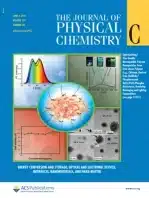
Charlène Presti, Aany S. Lilly Thankamony, Johan G. Aloauzun, P. Hubert Mutin, Diego Carnevale, Cédric Lion, Hervé Vezin, Danielle Laurencin, and Olivier Lafon
Abstract
We investigated the potential of solid-state NMR using magic angle spinning (MAS) with and without dynamic nuclear polarization (DNP) and electron paramagnetic resonance (EPR) for the characterization of functionalized nanodiamonds (NDs). We showed that conventional 1H, 31P, and 13C solid-state NMR spectra allow differentiating in a straightforward way NDs from commercial sources and custom-made NDs bearing aromatic or aliphatic phosphonate moieties at their surface. Besides, the short nuclear relaxation times prove the close proximity between the endogenous paramagnetic centers of NDs and the grafted organic moieties. EPR spectra confirmed the presence of these paramagnetic centers in functionalized NDs, which are centered on dangling bonds as well as a few N0 defects, corresponding to the substitution of carbon atoms by nitrogen ones. Hyperfine sublevel correlation spectroscopy indicates that the N0 paramagnetic centers are mostly located in the disordered shell of NDs. Preliminary DNP-enhanced NMR experiments at 9.4 T and 100 K under MAS have shown a lack of significant DNP enhancement, which can be attributed to the short relaxation times of the unpaired electrons and the nuclei in NDs. When using exogenous polarizing agents, the endogenous unpaired electrons contribute to a leakage of polarization. Furthermore, low temperatures lead to a broadening of NMR signals. It therefore appears that conventional direct excitation remains the NMR method of choice for the characterization of functionalized NDs.
https://pubs.acs.org/doi/10.1021/acs.jpcc.5b02171#
Related Compounds
